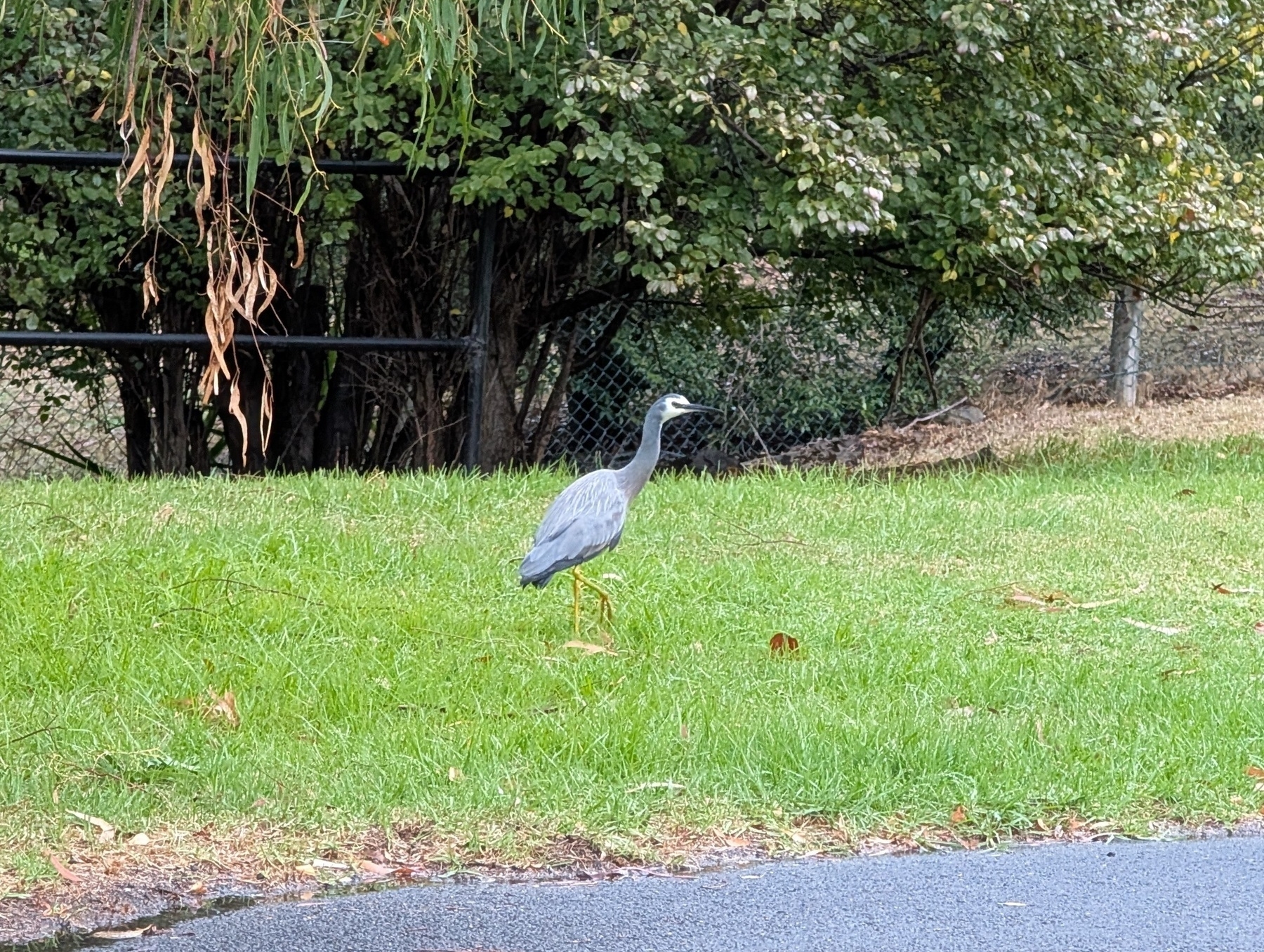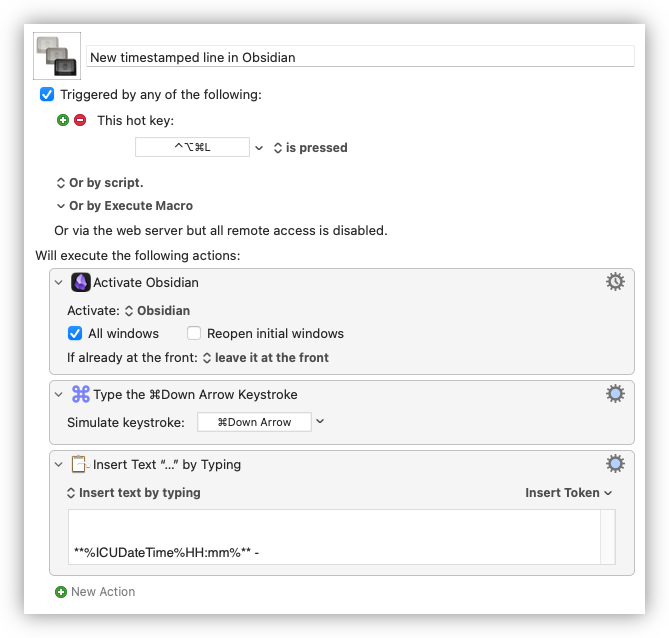-
I know for myself that if an OS vendor started designing their products thinking that I’d want an emotional connection with my computer, I’d start looking for another OS vendor. This is coming from someone who’s turned off Siri on all their Macs. I’m here to use my computer, not make new friends.
-
All the recent changes to UCL is in service of unifying the scripting within Dynamo Browse. Right now there are two scripting languages: one for the commands entered after pressing
:, and one for extensions. I want to replace both of them with UCL, which will power both interactive commands, and extensions.Most of the commands used within the in-app REPL loop has been implemented in UCL. I’m now in the process of building out the UCL extension support, start with functions for working with result sets, and pseudo-variables for modifying elements of the UI.
Here’s a demo of what I’ve got so far. This shows the user’s ability to control the current result-set, and the selected item programatically. Even after these early changes, I’m already seeing much better support for doing such things than what was there before.
-
📘 Devlog
UCL — Assignment
Some thoughts of changing how assignments work in UCL to support subscripts and pseudo-variables. Continue reading →
-
Unexpected heron sighting. The noisy miners were not expecting it either, and they were not happy.

-
Like the coining of phrase “Canadian Devil Syndrome” by emailer Joseph on the latest Sharp Tech.
-
Serious Maintainers
I just learnt that Hugo has changed their layout directory structure (via) and has done so without bumping the major version. I was a little peeved by this: this is a breaking change1 and they’re not indicating the “semantic versioning” way by going from 1.x.x to 2.0.0. Surely they know that people are using Hugo, and that an ecosystem of sorts has sprung up around it. But then a thought occurred: what if they don’t know? Continue reading →
-
Watched the first semifinals of the Eurovision Song Contest this evening on SBS (the good and proper time for an Aussie). Good line-up of acts tonight: not too disappointed with who got through.
My favourites this evening: 🇮🇸🇪🇪🇪🇸🇸🇪🇸🇲🇳🇱🇨🇾, plus 🇳🇴🇧🇪🇦🇿 which were decent.
-
My first automation to assist me with this “issue driven development” approach: a Keyboard Maestro macro which will activate Obsidian, go to the end of the document, and add a new line beginning with the current time.

My goal is to have one Obsidian note per Jira task, which I will have open when I’m actively working on it. When I want to record something, like a decision or passing thought, I’ll press Cmd+Option+Ctrl+L to fire this macro, and start typing. Couldn’t resist adding some form of automation for this, but hey: at least it’s not some hacked-up, makeshift app this time.
-
Enjoyed watching Simon Willison’s talk about issue driven development and maintaining temporal document for tasks. Watch the video but that section can be boiled down to “now write it down.” Will give this a try for the tasks I do at work.
-
📘 Devlog
Blogging Tools — Finished Podcast Clips
Well, it’s done. I’ve finally finished adding the podcast clip to Blogging Tools. And I won’t lie to you, it took longer than expected, even after enabling some of the AI features my IDE came with. Along with the complexity that came from implementing this feature, that touched on most of the key subsystems of Blogging Tools, the biggest complexity came from designing how the clip creation flow should work. Blogging Tools is at a disadvantage over clipping features in podcast players in that it: Continue reading →
-
I sometimes wish there was a way where I could resurface an old post as if it was new, without simply posting it again. I guess I could adjust the post date, but that feels like tampering with history. Ah well.
In other news, my keyboard’s causing me to make spelling errors again. 😜
-
My online encounters with Steve Yegge’s writing is like one of those myths of someone going on a long journey. They’re travelling alone, but along they way, a mystical spirt guide appears to give the traveller some advice. These apparitions are unexpected, and the traveller can go long spells without seeing them. But occasionally, when they arrive at a new and unfamiliar place, the guide is there, ready to impart some wisdom before disappearing again.1
Anyway, I found a link to his writing via another post today. I guess he’s writing at Sourcegraph now: I assume his working there.
Far be it for me to recommend a site for someone else to build, but if anyone’s interested in registering
wheretheheckissteveyeggewritingnow.comand posting links to his current and former blogs, I’d subscribe to that.
-
Or, if you’re a fan of Half Life, Yegge’s a bit like the G-Man. ↩︎
-
-
Gotta be honest: the current kettle situation I find myself in, not my cup of tea. 😏

-
Amusing that find myself in a position where I have to log into one password manager to get the password to log into another password manager to get a password.

-
Does Google ever regret naming Go “Go”? Such a common word to use as a proper noun. I know the language devs prefer not to use Golang, but there’s no denying that it’s easier to search for.
-
The category keyword test is a go.
-
Unless you’re working on 32 bit hardware, or dealing with legacy systems, there’s really no need to be using 32 bit integers in database schemas or binary formats. There’s ample memory/storage/bandwidth for 64 bit integers nowadays. So save yourself the “overflow conversion” warnings.
This is where I think Java made a mistake of defaulting to 32 bit integers regardless of the architecture. I mean, I can see why: a language and VM made in the mid-90s targeting set-top boxes: settling on 32 integers made a lot of sense. But even back then, the talk of moving to 64 bit was in the air. Nintendo even made that part of the console marketing.
-
There’s also this series of videos by the same creator that goes in depth on how the Super Mario Bros. levels are encoded in ROM. This is even more fascinating, as they had very little memory to work with, and had to make some significant trade-offs, like allowing Mario to go left. 📺
-
If anyone’s interested in how levels in Super Mario Bros. 2 are encoded in the ROM, I can recommend this video by Retro Game Mechanics. It goes for about 100 minutes so it’s quite in depth. 📺
-
Just blindly accepting permission dialogs whenever MacOS throws them at me, like some bad arcade game. Was this your intention, Apple?
-
Overheard this exchange just now at the cafe:
Customer: How ya’ feeling?
Barista: Feeling cold.
Customer: Well at least that’s something. If ya’ don’t feel the cold it means you’re dead.
Had a lot more weight to me than I think the customer originally intended.
-
Mother’s Day in full bloom over here. 💐

-
Rubberducking: More On Mocking
Mocking in unit tests can be problematic due to the growing complexity of service methods with multiple dependencies, leading to increased maintenance challenges. But the root cause may not be the mocks themselves. Continue reading →
-
🔗 NY Mag: Rampant AI Cheating Is Ruining Education Alarmingly Fast
Two thoughts on this. The first is that I think these kids are doing a disservice to themselves. I’m not someone who’s going to say “don’t use AI ever,” but the only way I can really understanding something is working through it, either by writing it myself or spending lots of time on it. I find this even in my job: it’s hard for me to know of the existence of some feature in a library I haven’t touched myself, much less how to use it correctly. Offloading your thinking to AI may work when you’re plowing through boring coding tasks, but when it comes to designing something new, or working through a Sev-1, it helps to know the system your working on like the back of your hand.
Second thought: TikTok is like some sort of wraith, sucking the lifeblood of all who touches it, and needs to die in fire.
Via: Sharp Tech
-
How and when did “double click” become a phrase meaning to focus on or get into the details of a topic? Just heard it being used on a podcast for the second time in as many weeks.